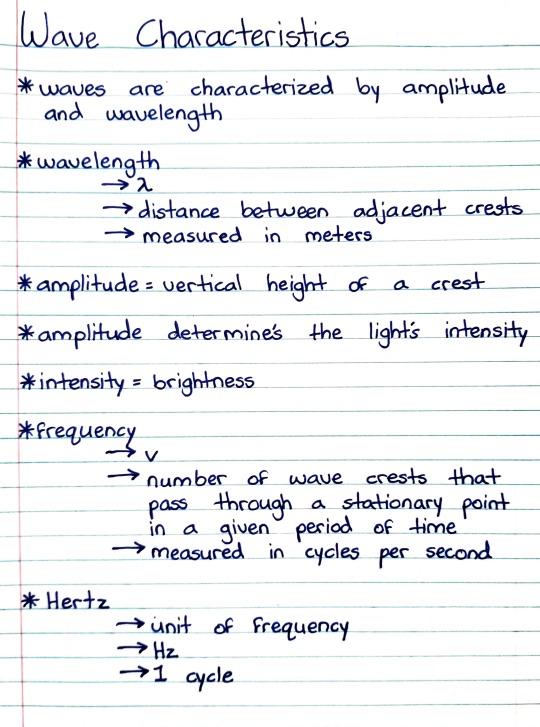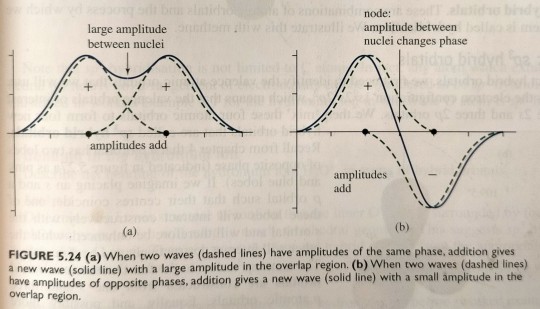#amplitude
Text







"Amplitude"
M51 Concept
#art#superyacht#design#ocean#luxury yacht#sea#megayacht#boat#ship#architecture#interiors#interiordesign#yacht concept#sailing yacht#sailing#billionaire#billionairelife#amplitude#M51
21 notes
·
View notes
Text

This photo has been approved by the staff of Achtoonbaby.com.
#yes I am sexualizing this old man because he is only five years older than me#moobs of justice#volume#amplitude#parabolas#hyperbolas#Bono
22 notes
·
View notes
Photo

One of my batch of commissions I took featuring Saria. This one also featuring a tiny bat pony known as Amplitude. She's a rather easy fit in this naga's tail.
18 notes
·
View notes
Photo

#studyblr#notes#my notes#physics#physics notes#waves#wave characteristics#characteristics of waves#wave frequency#wave amplitude#amplitude#frequency#hertz#light#physics of light#physics of waves#waves in physics#light in physics
7 notes
·
View notes
Photo

Kling GlöckchenTULIPA THEATERKulturposter
7 notes
·
View notes
Text

#Friedrich Nietzsche#Nietzsche#filosofia#pensamentos#análise#amplitude#profundidade#constatação#mood#🖤
0 notes
Text
Shadi Rostami, SVP of Engineering at Amplitude – Interview Series
New Post has been published on https://thedigitalinsider.com/shadi-rostami-svp-of-engineering-at-amplitude-interview-series/
Shadi Rostami, SVP of Engineering at Amplitude – Interview Series
Shadi is SVP of Engineering at digital analytics leader Amplitude. She is a passionate, seasoned technology leader and architect experienced in building and managing highly proficient engineering teams. Prior to Amplitude, she was VP of Engineering at Palo Alto Networks. She has innovated and delivered several product lines and services specializing in distributed systems, cloud computing, big data, machine learning and security.
Amplitude is built on modern machine learning and generative AI technologies that enable product teams to build smarter, learn faster, and create the best digital experiences for their customers.
What initially attracted you to computer science and engineering?
I grew up in Iran and originally pursued a high school path that would enable a career in medicine, which was the path my father wanted me to take and the one my brother did. About a year and a half in, I decided it was not the path for me. Instead, I pursued engineering and ended up becoming the first girl in Iran to go to the Informatic Olympiad (IOI) and won the Bronze medal, a yearly competition for high school students around the world competing in math, physics, Informatics, and chemistry. That led me to pursue engineering at Sharif University of Technology in Iran and later get my Ph.D. in computer engineering at the University of British Columbia in Canada. After that, I worked for startups for a few years and then spent a decade at Palo Alto Networks, eventually becoming a VP responsible for development, QA, DevOps, and data science. Five years ago, I moved to Amplitude as the SVP of Engineering.
Could you discuss Amplitude’s core AI philosophy that AI should aid humans in improving their work rather than replacing them?
AI is quickly transforming almost every industry, and with the transformation comes questions about how companies will use the technology. We feel strongly about getting AI right. This belief led us to develop our customer-centric AI philosophy, which stands upon five main principles: (1) collaborative development and thought partnership, (2) data governance and user data protection, (3) transparency, (4) privacy, security, and regulatory compliance, and (5) customer choice and control. We know these principles are key as companies continue to adopt and test AI and eventually become truly data-driven. For our purposes, this means building AI tools that help people get to insights faster. When harnessed properly, these insights lead to faster, better decisions that drive bottom-line results. Using AI as a tool to complement human intelligence and creativity is where I see AI having its greatest impact.
Can you explain the concept of ‘data democracy’ in the context of today’s AI-driven business environment?
“Data democracy is driven by the knowledge that teams function better, faster, and more efficiently when they can access the right data insights at the right time. In today’s rapidly advancing AI-driven environment, teams can’t afford to wait days or weeks for data pulls. To mitigate this, companies must empower their teams to leverage data in a self-service way. Now, this doesn’t mean data chaos with no parameters. At the end of the day, bad data leads to bad AI. But with the right tools and processes in place, businesses can balance data democratization with data governance, enabling better business outcomes.”
What key shifts in organizational culture do you believe are essential for enabling true data democracy in the age of AI?
Establishing a true data democracy within your organization starts with two foundational culture shifts: providing the right, most accessible tools and conducting organization-wide efforts around data literacy. This means adopting self-service tools that allow non-technical team members, such as marketing or customer success teams, to not only access data but also analyze and take action on it. I believe self-service data analytics can and should fuel collaboration across teams, inspire curiosity and exploration, scale data literacy, and place a bias on action and impact. Also, it is important to spend joint efforts between the central data team and line of business teams to do continuous data governance to make sure data quality does not degrade over time.
In your experience, what are the most significant challenges organizations face in achieving data democratization, and how can they overcome these obstacles?
In the past, companies have tried to centralize data within one team of experts, leaving the rest of the organization reliant on this team to deliver analysis and key insights that may be critical to their day-to-day operations and decision-making. While democratizing data access is critical to solving this bottleneck, it can also be challenging. When I speak to data leaders about operationalizing self-service, it’s clear there is a spectrum. On one end, you have low setup tools for non-technical and line-of-business teams. Ultimately, these tools do not give the depth and breadth of answers that these teams need. On the other end, you have more technical tools for more technical teams. They are much more flexible in terms of analysis, but they are slow, and likely very few people can even use them. We refer to these tools as creating a “data breadline” … you’re always waiting for answers. Teams need a solution in the middle. Think out-of-the-box solutions that encourage, not inhibit, exploration and experimentation. With the proper tooling and team education, companies can more easily bridge the data democratization gap.
How crucial is data literacy in the process of data democratization, and what steps should companies take to improve it among their employees?
Fostering an environment of data democratization across your teams is a cultural challenge that requires education and company-wide buy-in. In my experiences with teaching data processes to non-technical members, the best way to develop these skills is through a combination of training and hands-on learning. I recommend developing a comprehensive training program to ensure employees feel comfortable and confident in the insights they’re pulling from their data. Make sure you are using a tool that does not prohibit non-technical users: for example, any tool that requires knowledge of SQL would marginalize folks without programming expertise. From there, provide opportunities for employees to dive in and start playing around with the data. Finally, implement a tool that fosters exploration and collaboration. The less people are working in silos, the more they can bounce ideas off of each other, leading to more illuminating insights. If you are a data professional teaching a non-technical team member, remember that you have spent years learning how to obtain and use data, so you think about it differently from the casual user. Be open to teaching others rather than doing everything yourself. Otherwise, you’ll never have any free time to do anything aside from answering people’s questions.
With the rapid evolution of data tools and generative AI technologies, how should companies adapt their strategies to stay ahead in data management and utilization?
Data governance is one of the main challenges companies still face, and it’s something every organization must nail down to empower meaningful AI and data experiences. AI is only as good as the data that powers it, and clean data leads to more impactful insights, happier users, and business growth. In this way, companies must be proactive about data cleanup and taxonomy, and there are opportunities to use generative AI to manage your AI governance and quality. For example, at Amplitude, we launched our AI-powered Data Assistant product last year, which offers intelligent recommendations and automation to make data governance seamless and help users take charge of data quality efforts.
How does Amplitude enable enterprises to better understand the customer journey?
Building great digital products and experiences is hard, especially in today’s competitive landscape. Today, many companies still don’t know who they’re building for or what their customers want. Amplitude helps businesses answer questions like, “What do our customers love? Where do they get stuck? What keeps them coming back?” through quantitative and qualitative data insights. Our platform helps businesses better understand the end-to-end customer journey by surfacing data to help drive the customer acquisition, monetization, and retention cycle. Today, more than 2,700 customers, including enterprise brands like Atlassian, NBC Universal, and Under Armour, leverage Amplitude to build better products.
Thank you for the great interview, readers who wish to learn more should visit Amplitude.
#ai#ai tools#AI-powered#amplitude#Analysis#Analytics#Atlassian#automation#Bias#Big Data#box#brands#bridge#Building#Business#business environment#Canada#career#challenge#chaos#chemistry#Cloud#cloud computing#Collaboration#collaborative#Companies#compliance#comprehensive#computer#Computer Science
0 notes
Text
Align ~ DRC Speaker Alignment Utility
In 5 clicks, DRC for (almost) dummies
Simple, fast and effective software to measure and calculate the amplitude and phase correction and “align” speakers. This software also allows you to measure speakers to adjust them and/or to find the best placement in the room.
Note: DRC stands for Digital Room…

View On WordPress
0 notes
Text













"Amplitude"
M51 Yacht Design
#art#design#superyacht#megayacht#ocean#luxury yacht#sea#boat#ship#travels#billionairelife#billionaire#boat concept#yacht concept#amplitude#M51#render#sailing#wings#sailing yacht
64 notes
·
View notes
Text
These overlaps and the resulting molecular orbitals are shown in figures 5.24 and 5.45.


"Chemistry" 2e - Blackman, A., Bottle, S., Schmid, S., Mocerino, M., Wille, U.
1 note
·
View note
Text

1 note
·
View note
Text

#Euclides da Cunha#O Marechal de Ferro#leitura#citações#literatura#trecho#obras literárias#observação#amplitude#mood#🖤
0 notes
Text
Amplitude
noun
Greatness of size; magnitude.Fullness; copiousness.
Breadth or range, as of intelligence.
The angular distance along the horizon from true east or west to the intersection of the vertical circle of a celestial body with the horizon.
The maximum absolute value of a periodically varying quantity.
The maximum absolute value of a periodic curve measured along its vertical axis.
The angle made with the positive horizontal axis by the vector representation of a complex number.
The maximum absolute value reached by a voltage or current waveform.
0 notes
